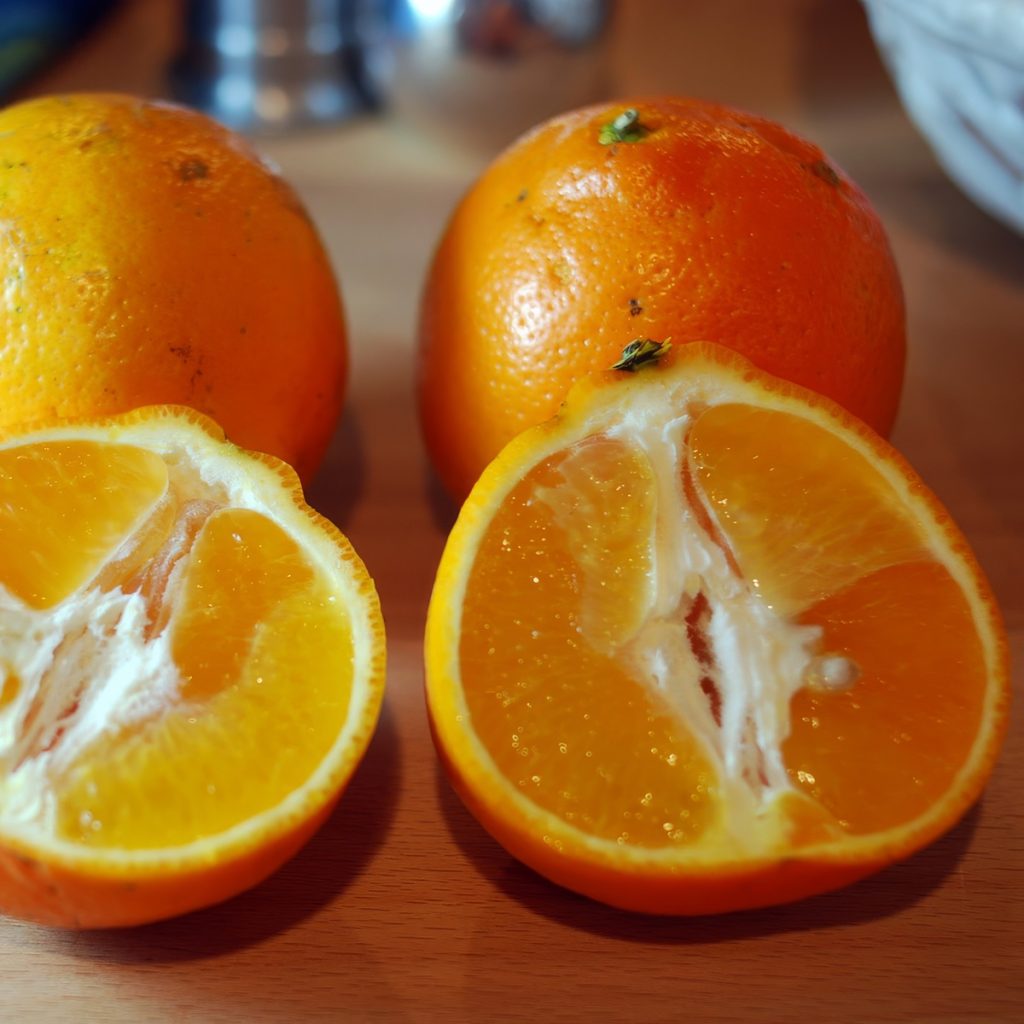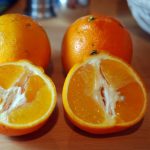If you’ve never tasted a Honeybell orange, you’re in for a treat! Known for their incredible sweetness and juiciness, Honeybells are a particular type of tangelo—a hybrid of tangerines and grapefruits.
Their unique bell shape gives them their name, and their flavor is as delightful as their appearance. These vibrant citrus fruits are a wintertime treasure available only for a short season, usually in January and February.
In this post, we’ll explore what makes Honeybell oranges unique, how to pick the best ones, and how to use them in your kitchen. While they’re perfect for snacking alone, Honeybells shine in recipes that highlight their bright, sweet flavor.
One of the best ways to enjoy Honeybell oranges is in a refreshing cocktail. I’ve created a simple Honeybell orange juice cocktail perfect for brunch, relaxing evenings, or any celebration.
This drink pairs the zesty essence of fresh-squeezed Honeybell juice with a hint of sparkling sweetness for a crowd-pleasing delight. Whether you’re new to Honeybells or a longtime fan, this recipe will have you savoring every last drop of their brief, seasonal magic. Let’s dive into the world of Honeybells and raise a glass to citrus perfection!
What Are Honeybell Oranges?
Honeybell oranges are a premium type of tangelo, a hybrid fruit that combines the sweetness of a tangerine with the tart, juicy characteristics of a grapefruit. They are named for their distinctive bell-like shape. Honeybells are prized for their incredible sweetness, low acidity, and exceptionally juicy flesh, making them one of the most coveted citrus fruits.
Honeybells are only available for a short season, typically from late December through February, with their peak in January. This brief availability adds to their allure and makes them a seasonal treat. They have a bright orange color, a thin, easy-to-peel skin, and very few seeds, making them a favorite for both snacking and juicing.
Honeybells are oranges grown primarily in Florida, where the climate is ideal for producing their unique flavor profile. They are also known as Minneola tangelos, though not all Minneolas have the exact sweetness and juiciness associated with true Honeybells.
Their intense juiciness makes Honeybells perfect for fresh-squeezed juice, cocktails, desserts, or simply enjoying as-is. Because of their rarity and exquisite flavor, they’re often given as gifts during the winter months. If you’re lucky enough to try one, it’s a citrus experience unlike any other!

Honeybell Orange’s Characteristics
Honeybell oranges, or Minneola tangelos, are known for several distinctive characteristics that make them stand out among other citrus fruits:
- Shape and Appearance: Honeybells have a unique, slightly bell-shaped appearance, with a small knob at the stem end. Their skin is smooth, thin, and bright orange, making them visually appealing and easily recognizable.
- Flavor: Honeybell oranges are a delightful combination of sweet and tangy. They inherit a subtle tartness from their grapefruit parent, balanced by the sweetness of the tangerine, resulting in a rich, complex flavor.
- Juiciness: One of Honeybells’ most notable characteristics is their juiciness. They contain a high amount of juice, which makes them ideal for fresh consumption or juicing. This abundant juice content has earned them the nickname “juice bomb.”
- Peelability: Honeybells’ thin, loose skin makes them easy to peel, making them a convenient, mess-free snack.
- Seasonality: Honeybell oranges have a very short growing season, typically from late December through February. Their limited availability adds to their desirability, making them a sought-after winter treat.
- Aroma: They have a fragrant, citrusy aroma that is both refreshing and invigorating, enhancing their appeal.
These characteristics make Honeybell oranges a unique and cherished fruit among citrus lovers.

Honeybell History and Development:
The U.S. Department of Agriculture developed Honeybell oranges in Florida during the early 20th century. By intentionally crossbreeding a Dancy tangerine and a Duncan grapefruit, they aimed to combine the tangerine’s sweetness and aroma with the grapefruit’s juiciness and slight tartness.
In 1931, growers successfully created the first Minneola tangelo, naming it after the town of Minneola, Florida, where they grew the fruit. Over time, this variety gained fame as the Honeybell, celebrated for its distinct bell shape and honey-like flavor.
Name Origin
The name “Honeybell” perfectly describes the fruit’s most notable features—its shape and taste. The “bell” refers to the bulge at the stem end, while “honey” highlights its sweet, succulent flavor, reminiscent of honey. This name has become synonymous with high-quality, juicy citrus that stands out for its exceptional flavor.
Today, farmers primarily grow Honeybell oranges in Florida, harvesting them briefly during the winter. This short season adds to their appeal, making them a prized seasonal delicacy for citrus lovers.


Honeybell Orange Juice Cocktail
Ingredients
- 4 Honeybell oranges peeled but leave the yellow pith
- 1 apple
- 1 carrot
- ½ mango peeled and pitted
- 2 slices fresh pineapple about 1/2 inch thick with the skin removed, we used already cut up chunks of pineapple available at the supermarket
Instructions
- Prep all the ingredients coring the apple and cutting them into quarters. Peel and pit the mango. Get your pineapple ready depending on what you are using. Remove the tops from the carrots but leave the skin on.
- To make the juice, just add everything to a juice machine (juicer). As you can see from the photo, my wife used a juice extractor and a juicer both of which pre-date our marriage.
Notes
Yesterday, we juiced some other fruit, including strawberries and bananas, and the drink was equally delicious. It is hard to mess up a fruit juice drink if you have quality fresh fruit. I hope to keep the juicer and extractor a little busier now that we’ve enjoyed the nutritious and delicious concoctions they create.
If you have a favorite juice combination, please share it with me.






2 Responses
I absolutely adore honeybell tangelos! And I live in Florida, doubly good. They are the best citrus fruit ever.
Alright Carla, good to hear from the Sunshine State. – RG
i love honeybelles! i would never mix anything else with their wonderful juice though.
Hi Jamie, you have a point but this concoction was delicious. – RG